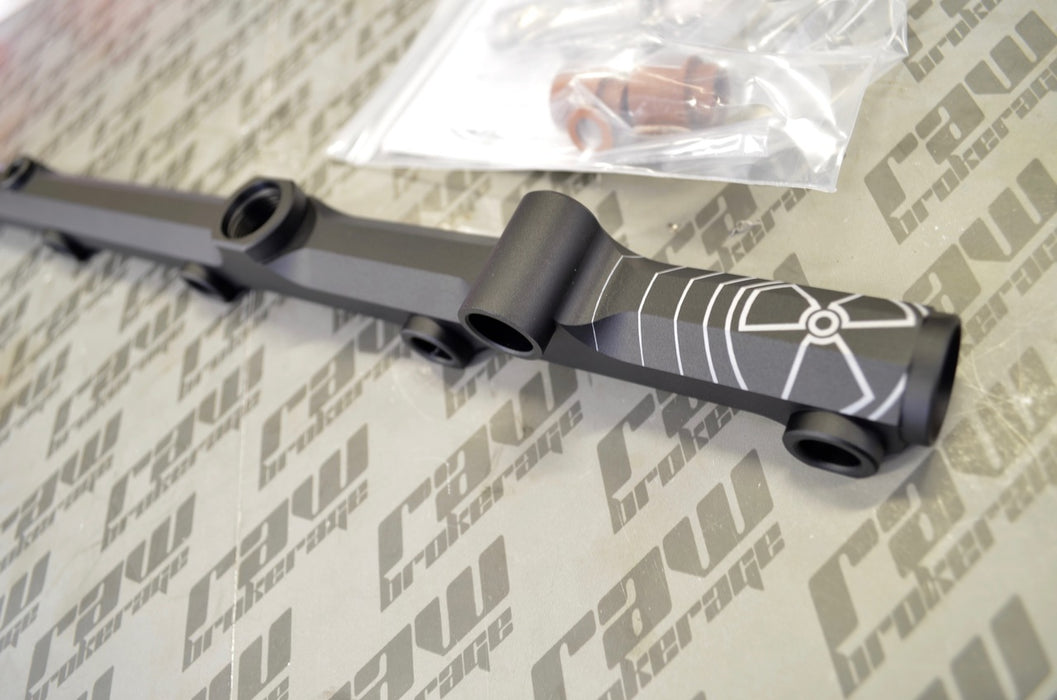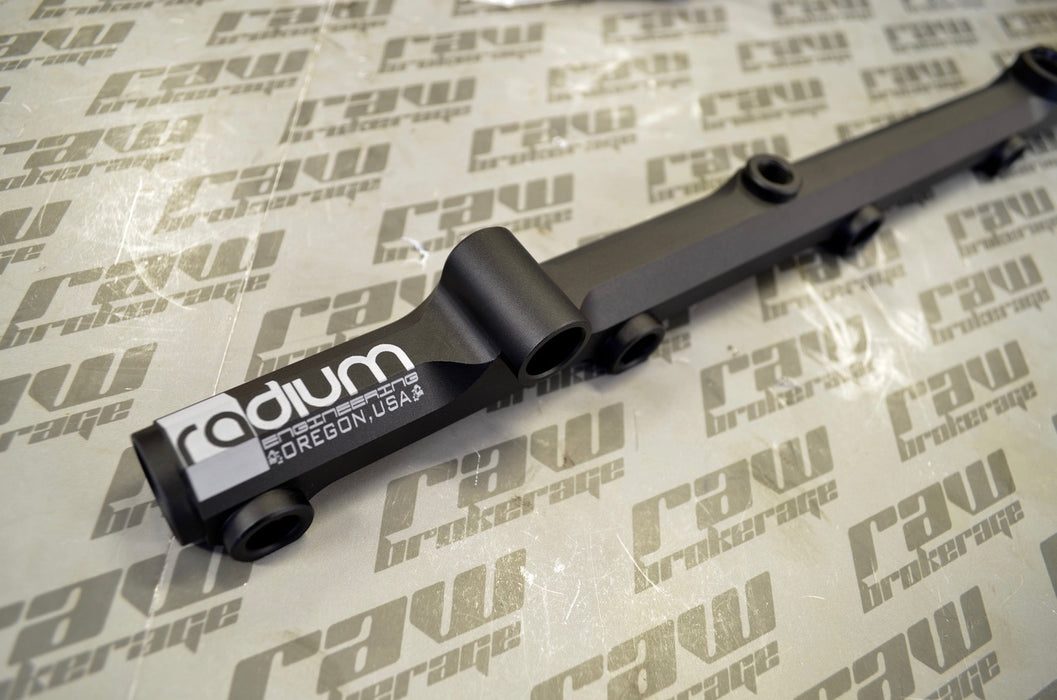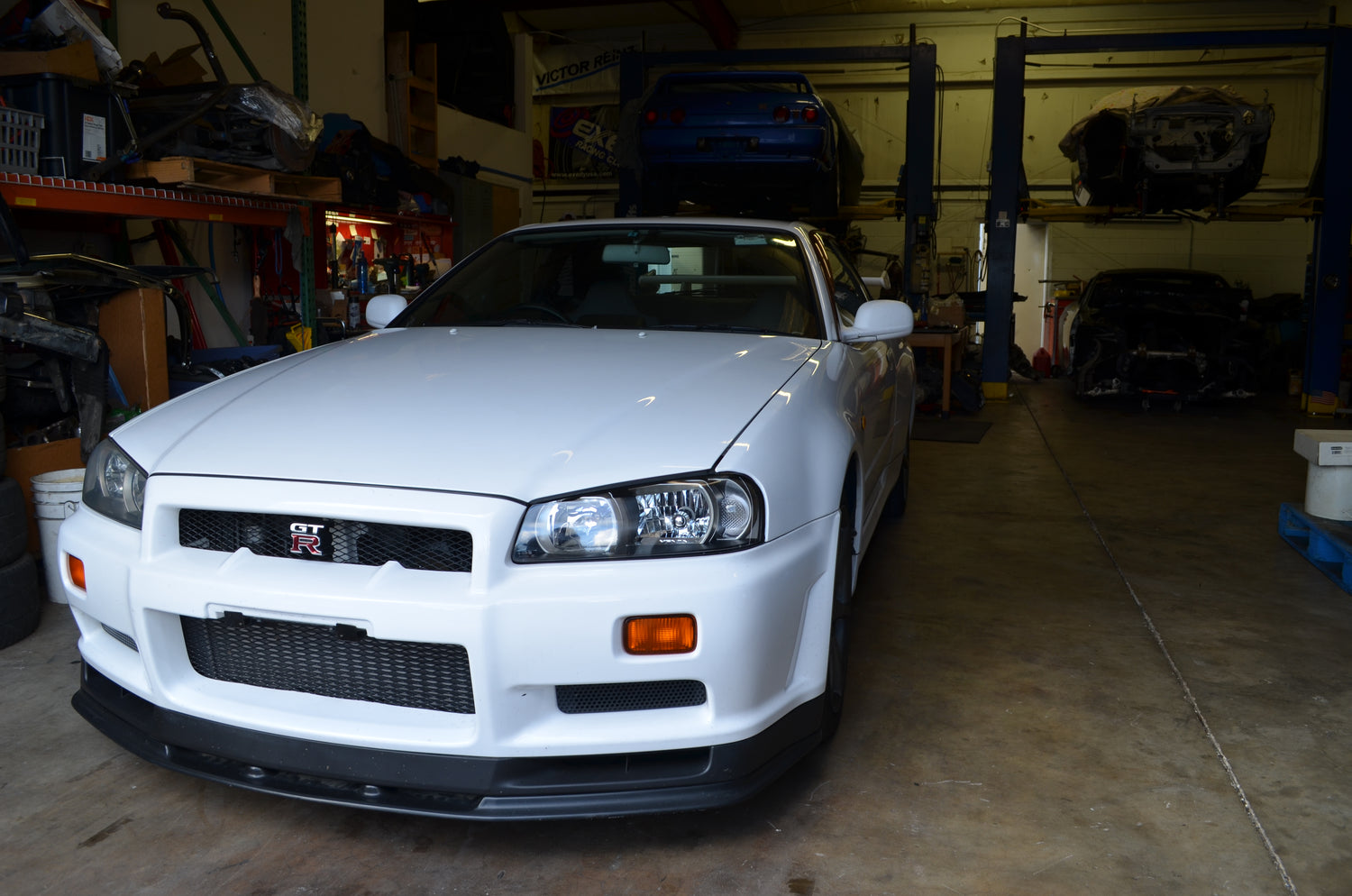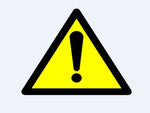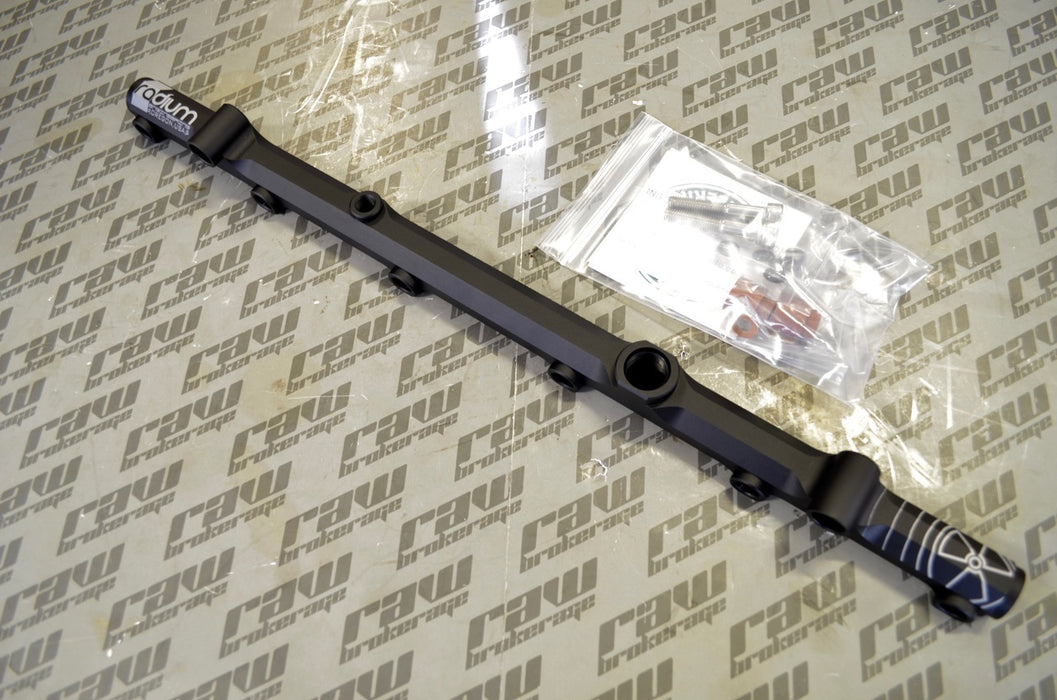
Radium Engineering Nissan RB26DETT RB26 Fuel Rail
This 1989-2002 Nissan Skyline GT-R fuel rail kit is designed specifically for OEM (R32/R33/R34) RB26DETT intake manifolds. It features a large 0.69" internal diameter bore to suit even the most fuel hungry engines. The rail is CNC machined from a custom 6063 aluminum extrusion and black anodized and laser etched for a high quality surface finish.
For thermal insulation, press-fit machined phenolic spacers and washers are included to completely isolate the fuel rail from heat transfer via the manifold and mounting bolts, as shown.
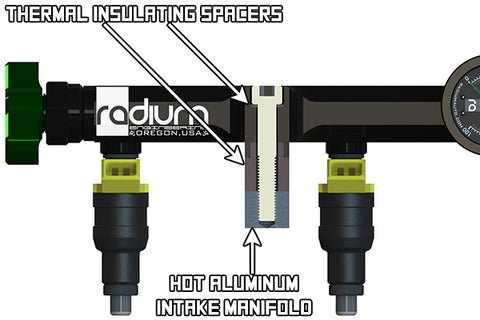
The upper injector bores are machined with a common 11mm ID (Denso). NOTE: Six custom upper injector O-rings are included allowing the use of OEM RB26DETT (JECS) injectors which normally require 10.45mm ID bores. NOTE: Aftermarket injectors may require washer shims for proper fitment. The fuel injector must have specific spacing, as shown.
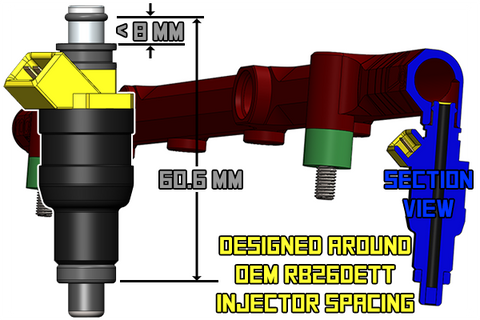
This kit is compatible with all fuel types including popular alcohol mixtures such as E85.
20-0217 FUEL RAIL FOR RB26DETT, INCLUDES:
-Black Anodized Aluminum Fuel Rail
-Insulating Phenolic Spacers (x2)
-Insulating Phenolic Washers (x2)
-Stainless Steel Mounting Bolts (x2)
-Viton O-rings for OEM Injectors (x6)
NOTE: This fuel rail kit does NOT come standard with fittings (see port configurations below).
PORT CONFIGURATIONS:
The Front, Rear, and Center Ports use 8AN ORB (3/4"-16 O-ring threads) to accept many adapter fittings for custom high flow fuel system builds. If the OEM Fuel Pressure Regulator will be reused, select the 20-0222 FPR Adapter option for the Front Port. The Gauge Port has 1/8" NPT female threads commonly used for a fuel pressure gauge/sensor or it can be plugged. Use the optional check boxes above and the diagram below to select the appropriate port configuration for your specific application.
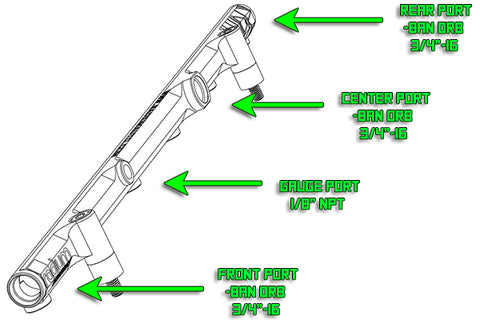
Do I need a pulse damper?
The opening and closing of the injectors creates pressure pulses in the fuel rail, which can lead to unstable fuel pressure. In order to achieve a safe and consistent rail pressure, a pulse damper should be used (especially with high flow injectors). The internal diaphragm will absorb oscillation pulses and stabilize fuel pressure. This correction can be measured throughout the RPM range and can often help an erratic surging idle. The fuel pulse damper can be used in any 8AN ORB port.

